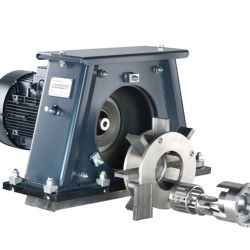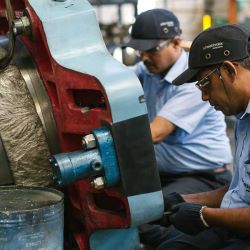Abrasive Reclamation Options
For improved abrasive cleansing, e.g. separation of aluminium flashes, a vibro sieve can be installed between the reclamation unit and abrasive silo.
Option for Foundry/Heavy-duty Applications
A vibro conveyor can replace the screw conveyor to provide targeted cleansing/separating of sand and heavy contaminants from the used abrasive. The conveyor should ideally be installed with a magnetic separator (also optional) to remove sand in order to prolong the service life of the machine. The abrasive then goes to the airwash separator as before.
Manually Operated Monorail
As standard, the monorail system is designed in a Y-shape and equipped with two carrying hooks made from manganese steel. As an option, the monorail can be adapted to your individual request, e.g. as branch line or oval system.
The workpiece batches are manually pushed to the door of the shot blast machine where they are automatically taken by a feeding system.
For especially heavy workpieces there is the option to install an automatic transport facility over the whole length of the overhead rail system.
Lifting Gears
Depending on the workpieces to be treated, and the preceding and subsequent processes, it may be advantageous to combine the carrying hooks with a chain hoist so that workpiece batches or heavy parts can be easily picked up. The chain hoist is operated directly at the loading/unloading station of the overhead rail system.
There is another advantage of using lifting gear with large machines: to provide an ergonomic loading/unloading process the machines without lifting gears are often placed in a foundation pit to lower the position of the workpiece carrier. When a lifting gear is used the foundation pit is not necessary.


